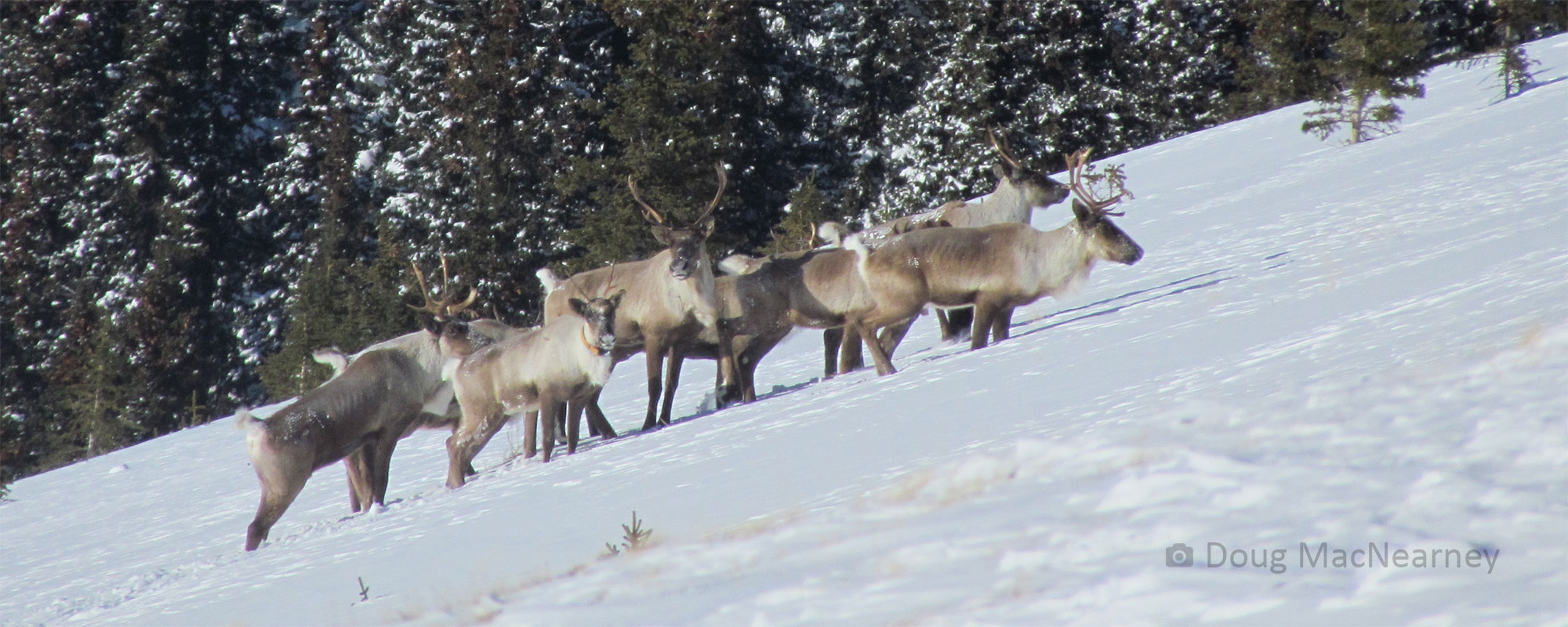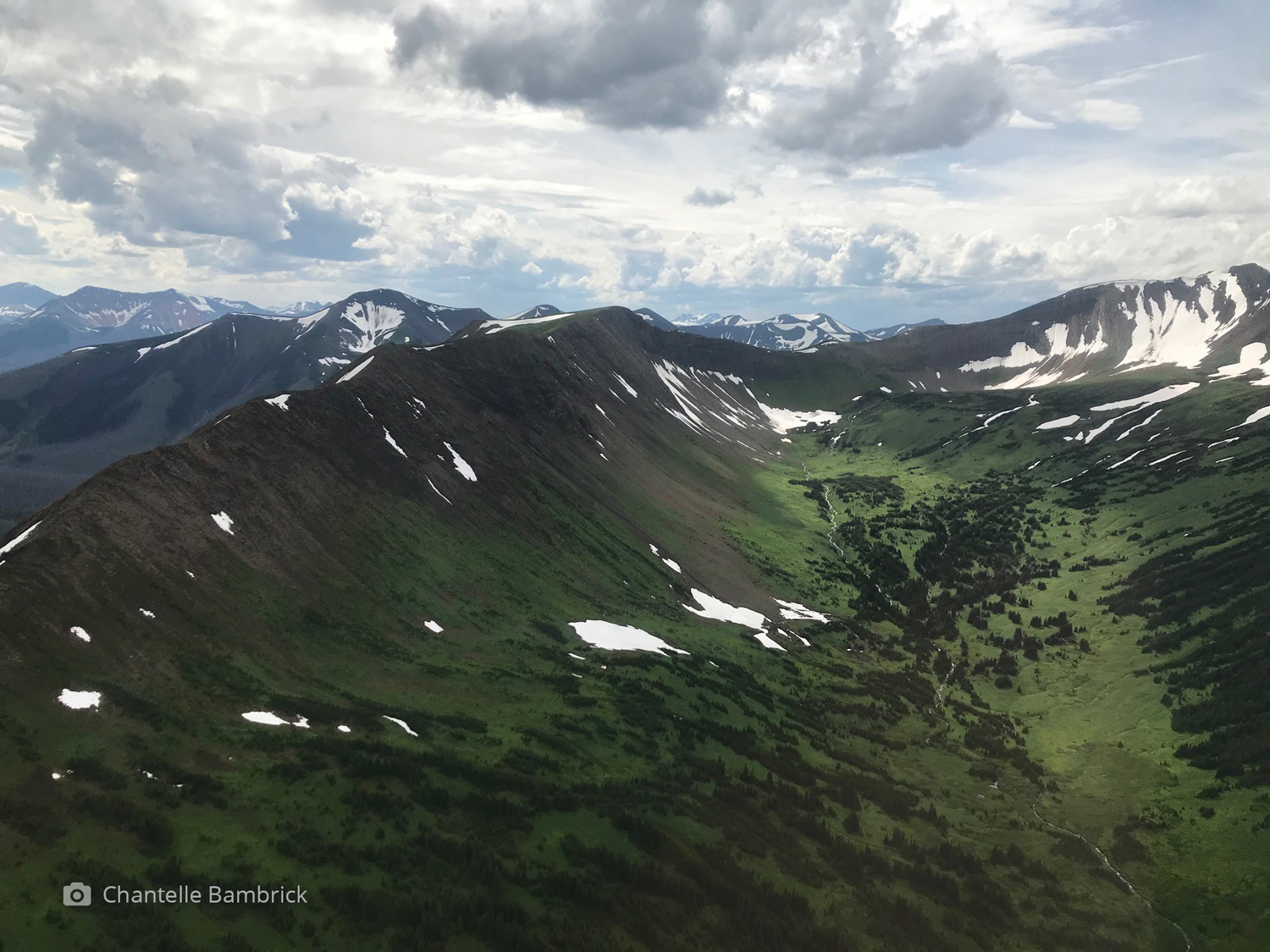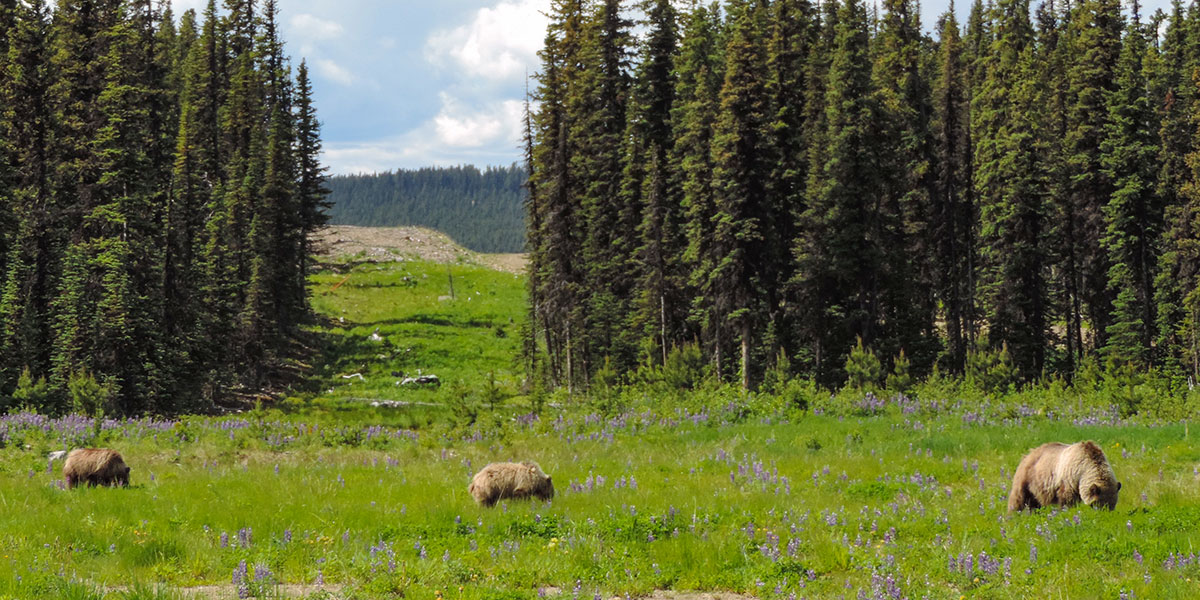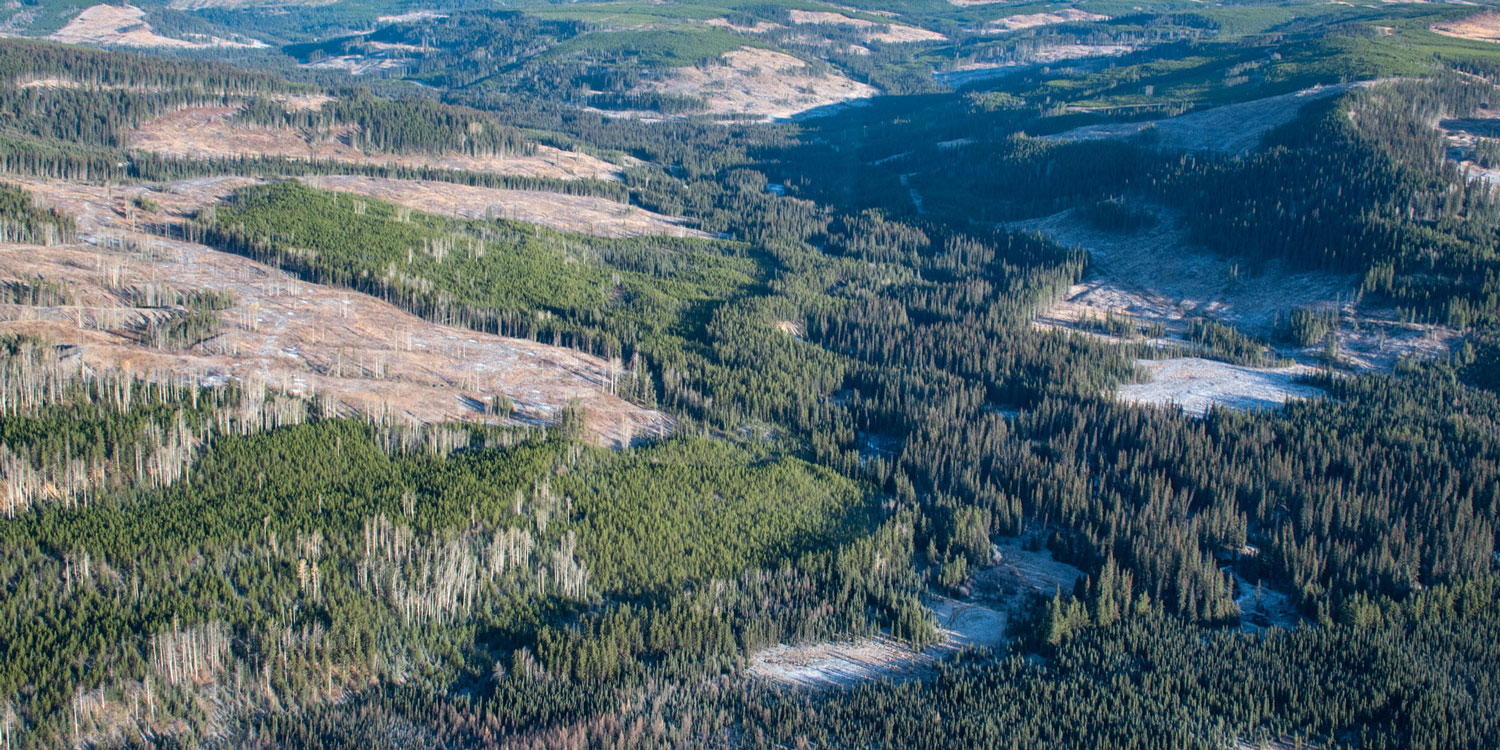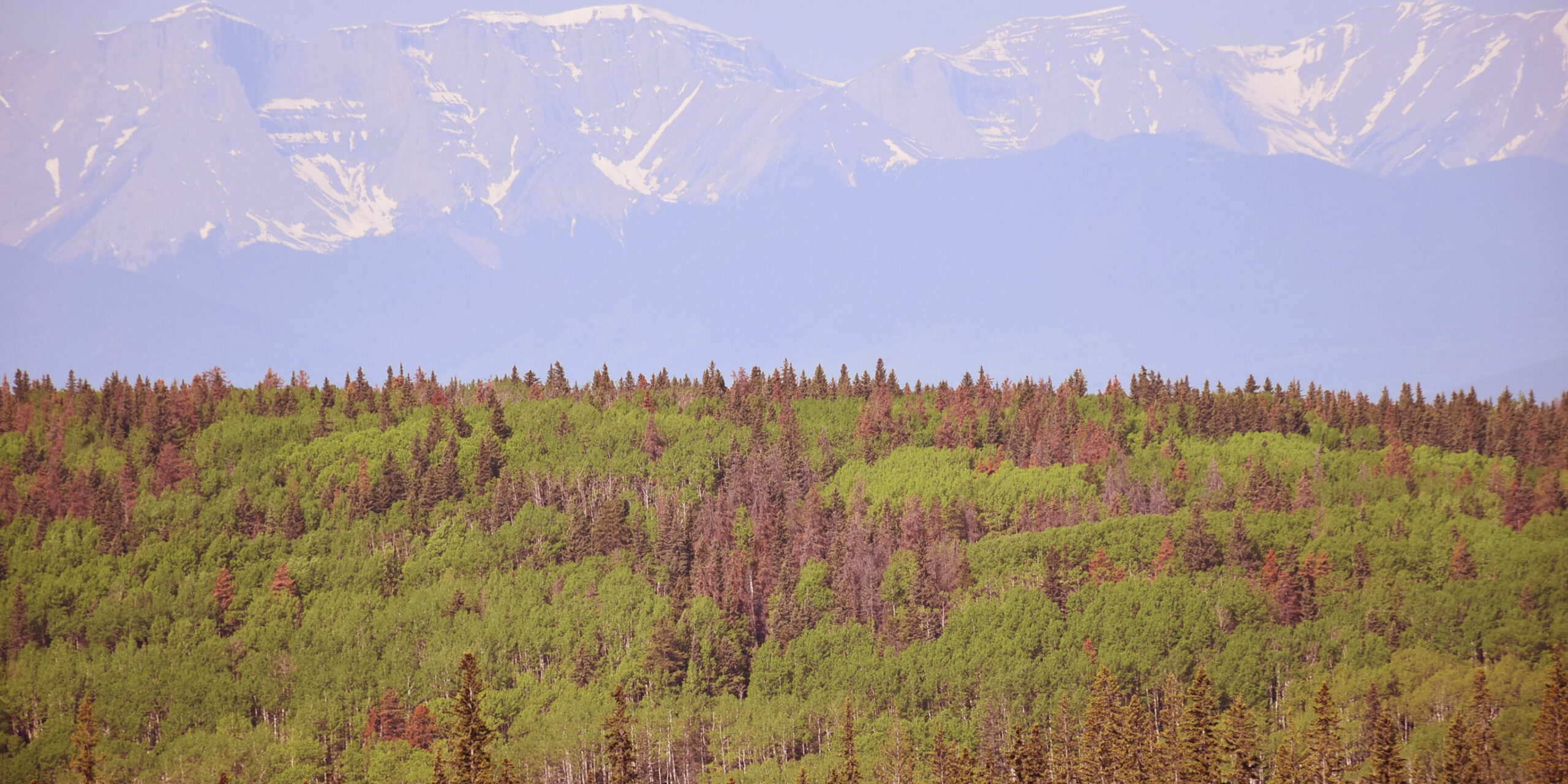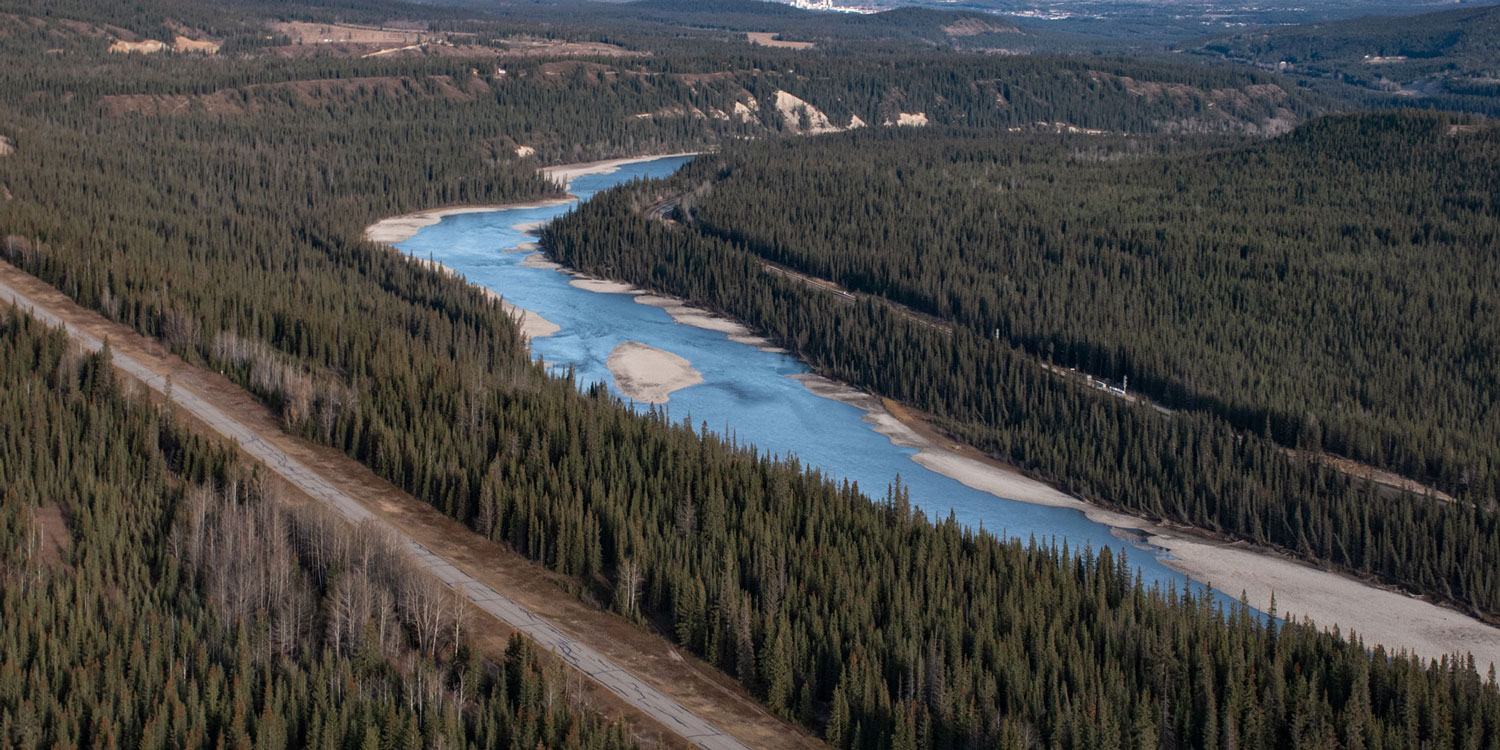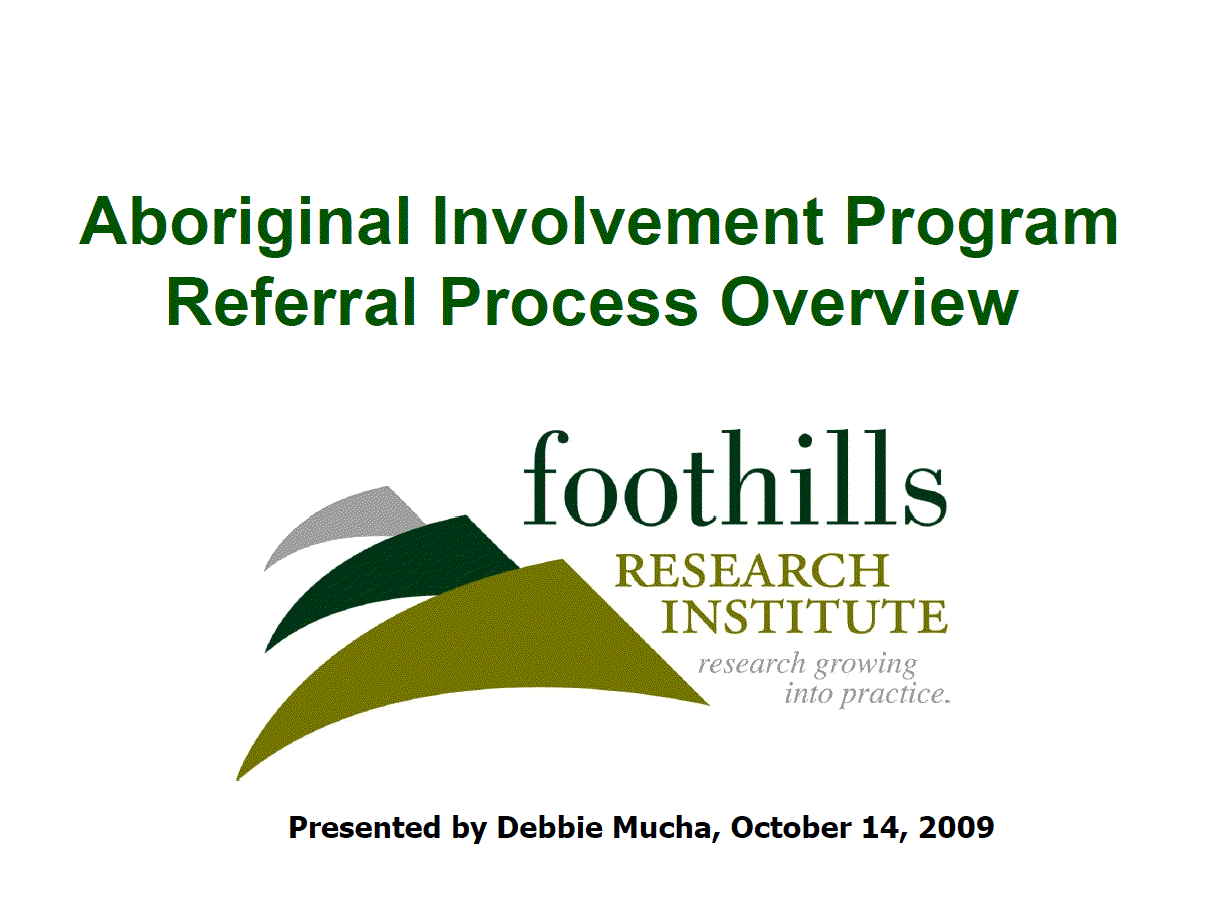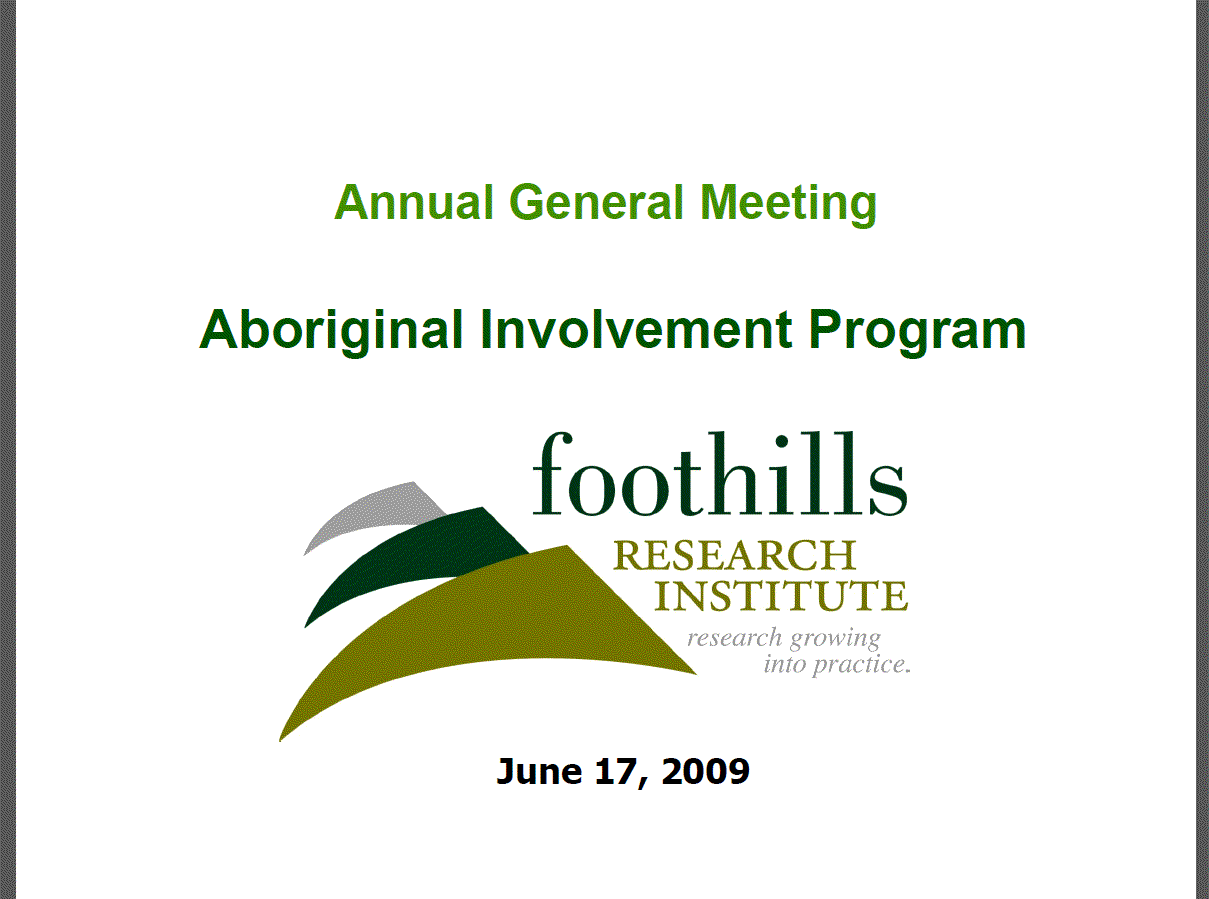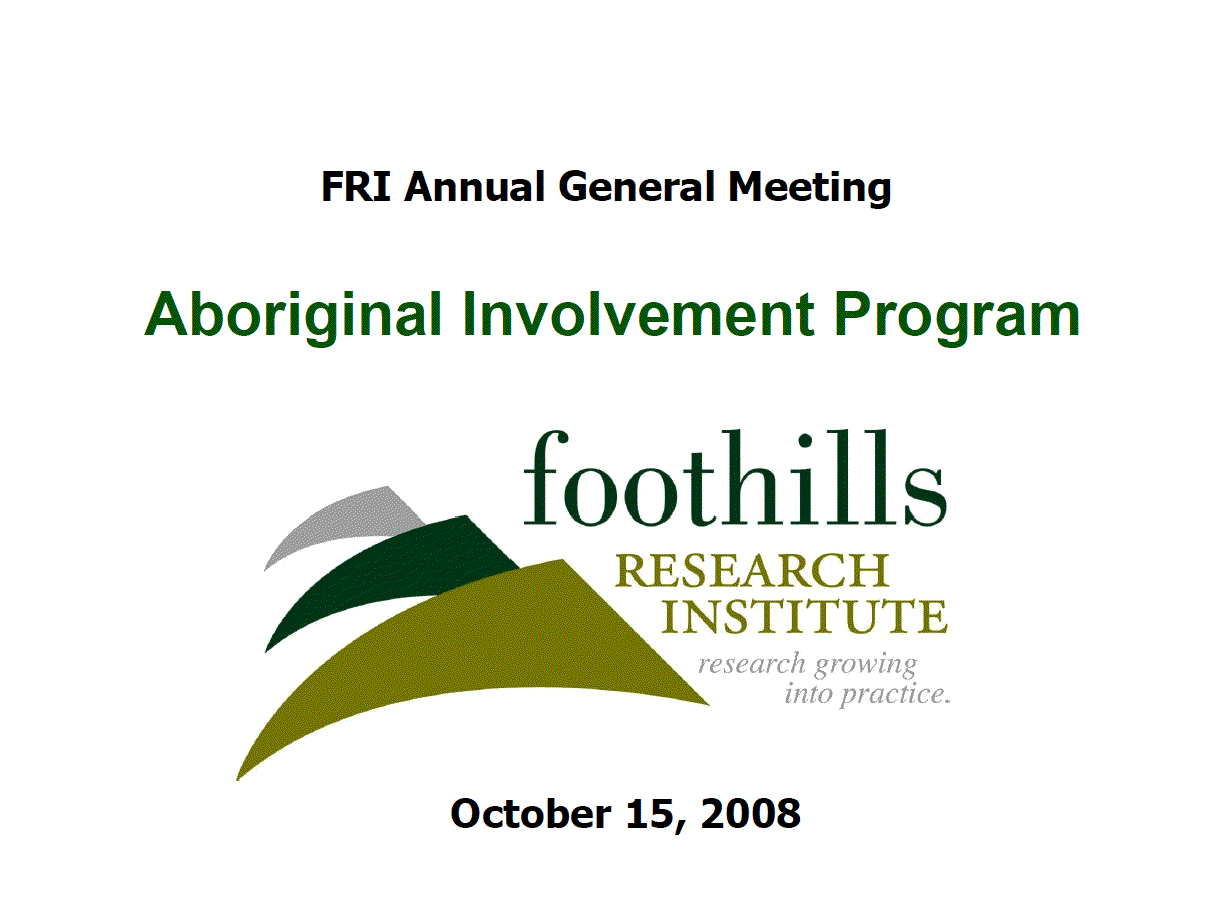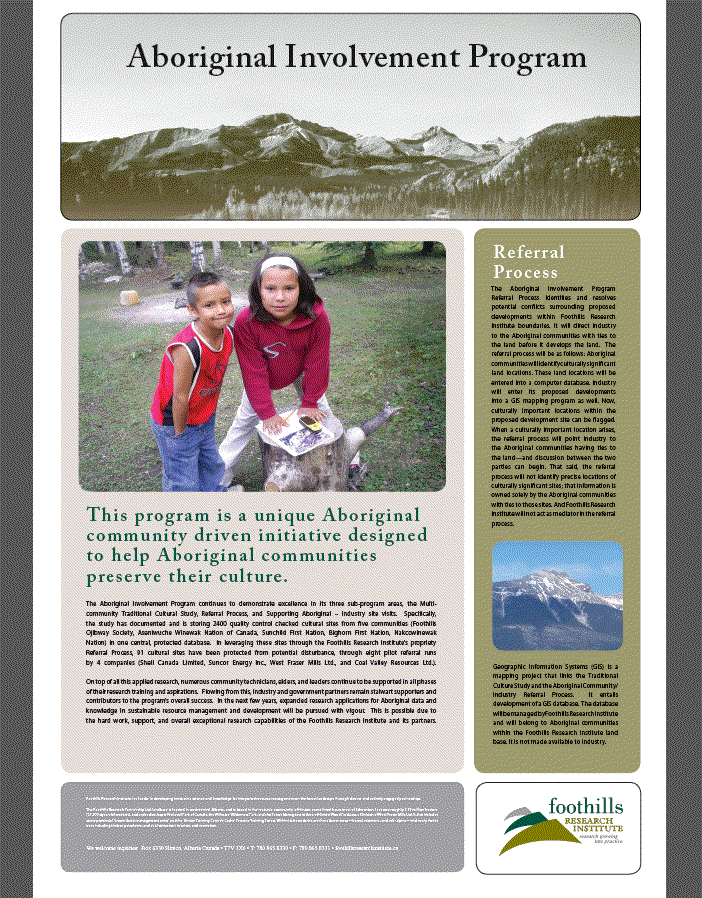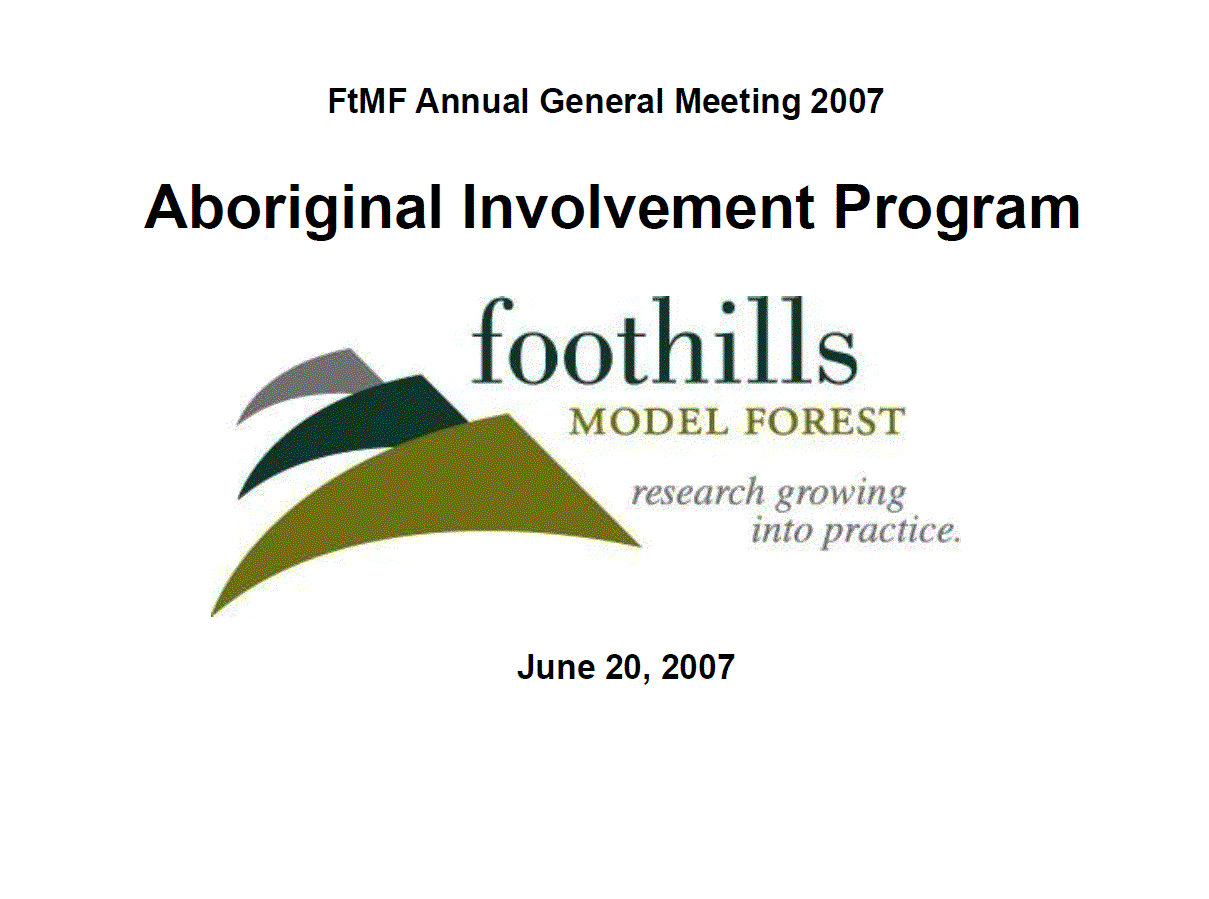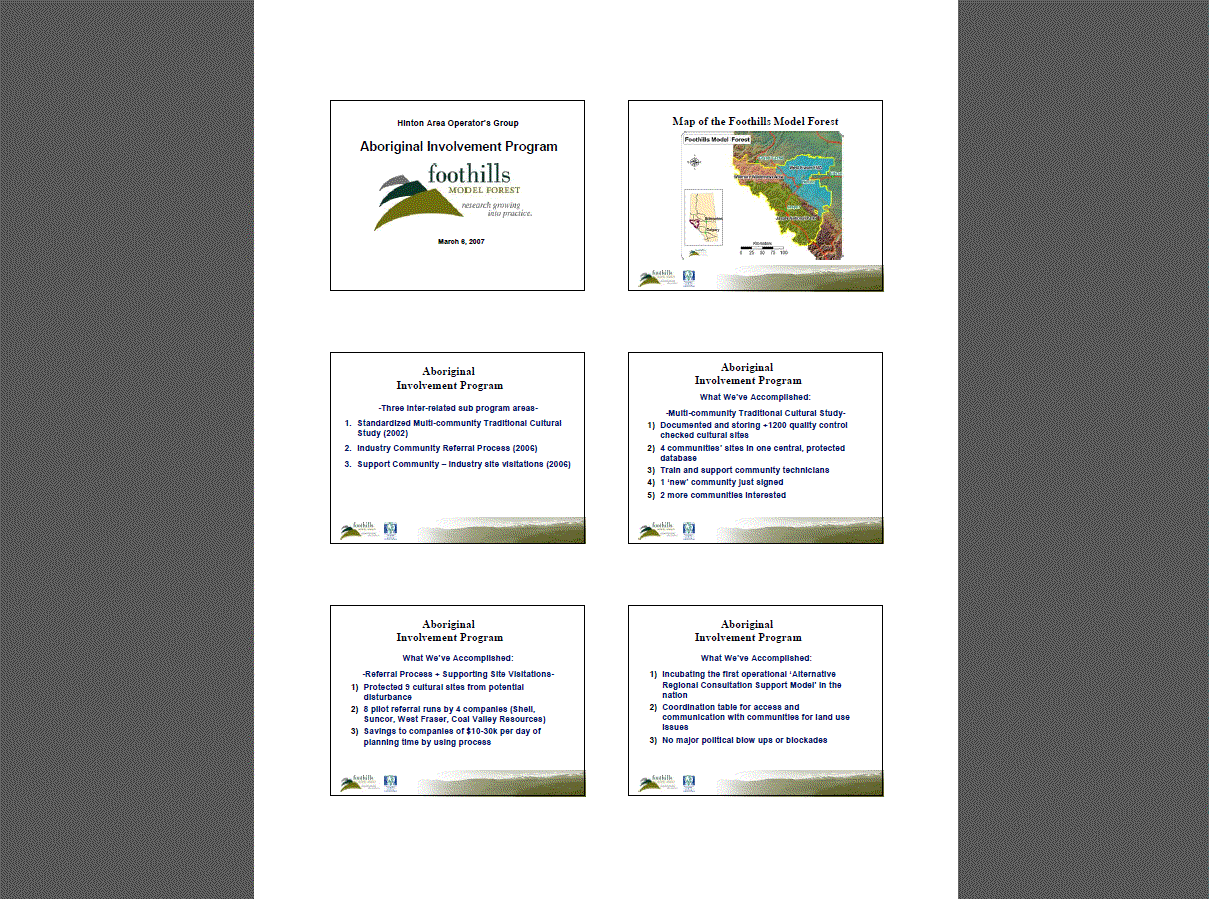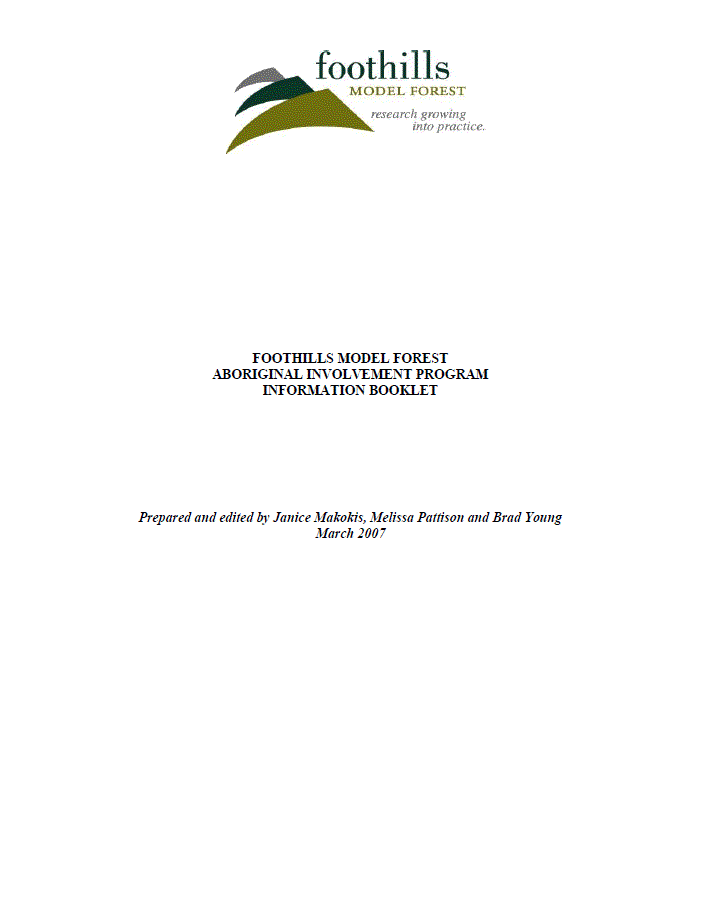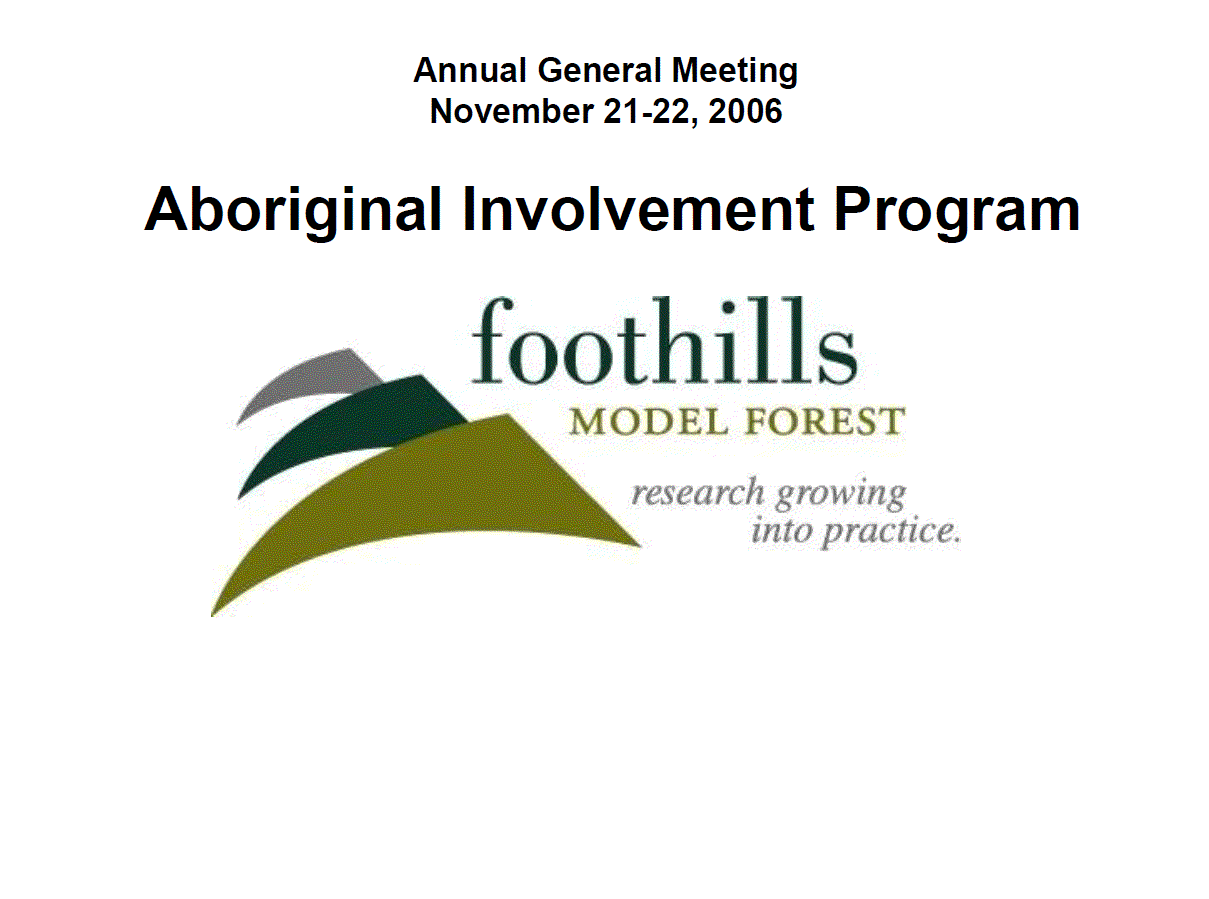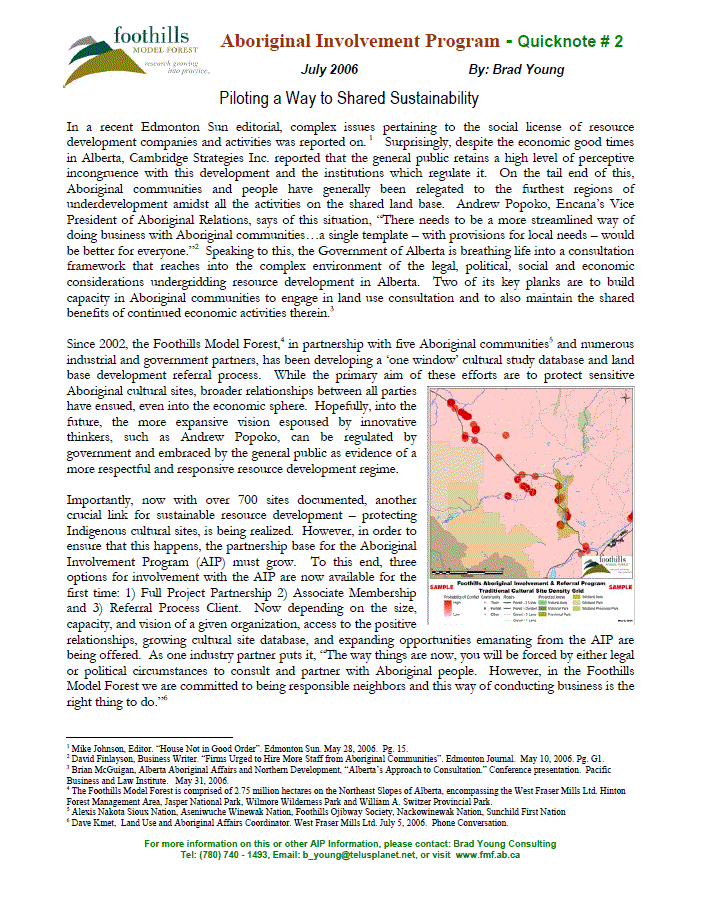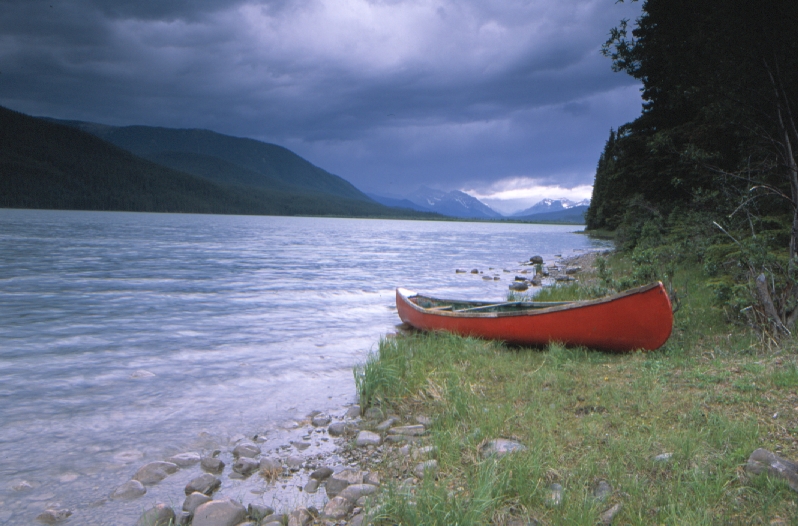
Aboriginal Involvement Program
Improving land management by facilitating collaboration between indigenous communities, industry, and government.
The program worked with indigenous communities, resource-based industries and the Province of Alberta to develop a process that better involved indigenous communities in land management decisions.
The Aboriginal Involvement Program began in 2000 and ran until 2010. The program worked with Aboriginal communities, resource-based industries and the Province of Alberta to develop a process that better involved Aboriginal communities in land management decisions. The five Aboriginal communities involved in the program documented and stored 2400 cultural sites in one central, protected database. Subsequently, four companies (Coal Valley Resources Ltd., Shell Canada Limited, Suncor Energy Inc and West Fraser Mills) used the pilot Referral Process resulting in 91 cultural sites being protected from potential disturbance from industrial activities.
The three elements of the Aboriginal Involvement Program were:
- Traditional cultural studies: Aboriginal communities collect, document and store sites that are of social, cultural and spiritual importance.
- Referral process: Traditional cultural sites were entered into a geographic information system (GIS) database. Prior to a development, industry entered the location of its proposed development into the same GIS database. A database query determined which Aboriginal communities needed to be contacted for potential consultation and provided that information to industry. The referral process did not identify precise locations of culturally significant sites; that information was owned solely by the Aboriginal communities with ties to those sites.
- Supporting Aboriginal – industry site visits: When a proposed industrial development was in the vicinity of a cultural site, Program staff could facilitate meetings between industry and the affected Aboriginal community.

